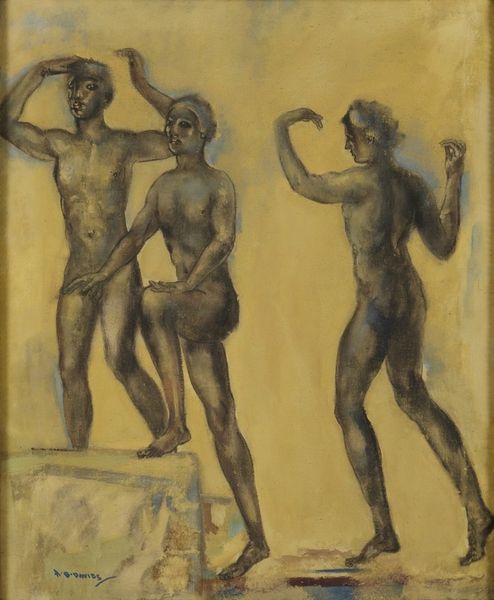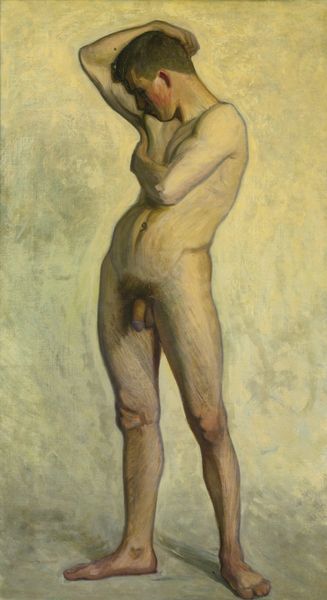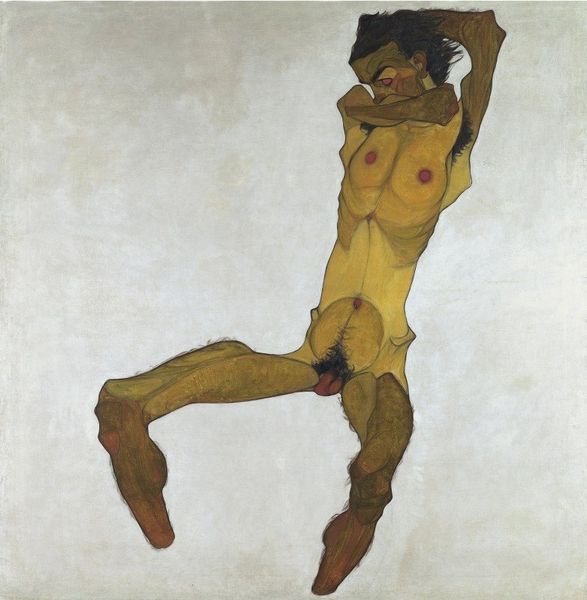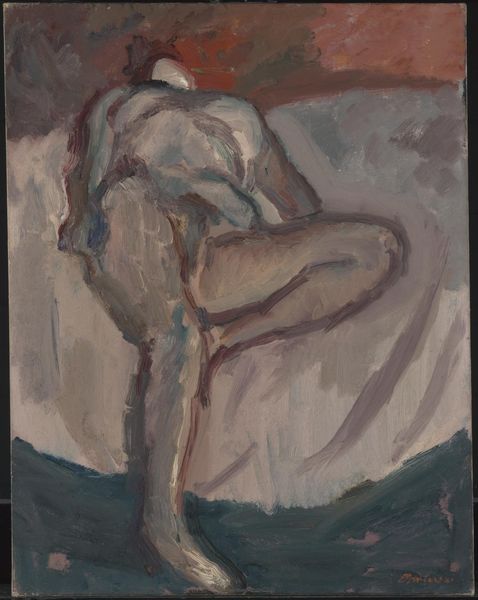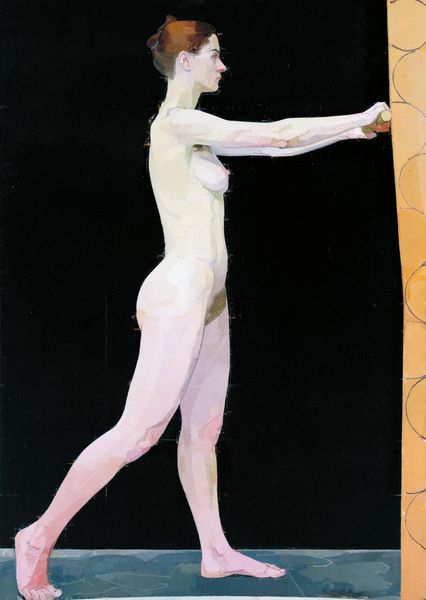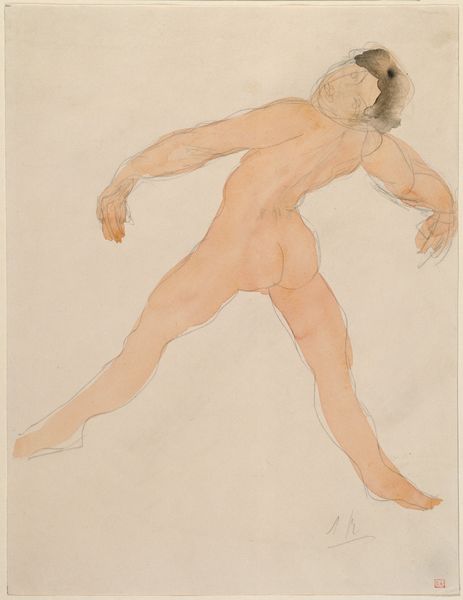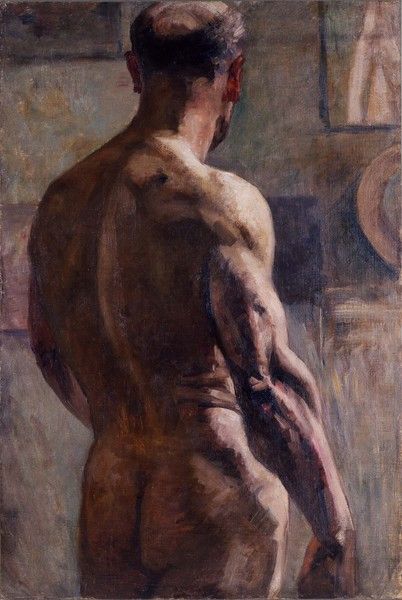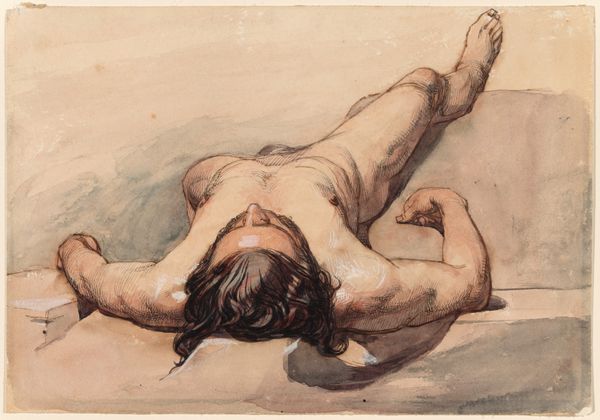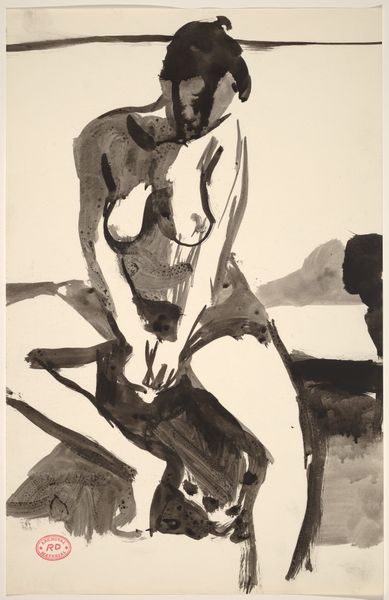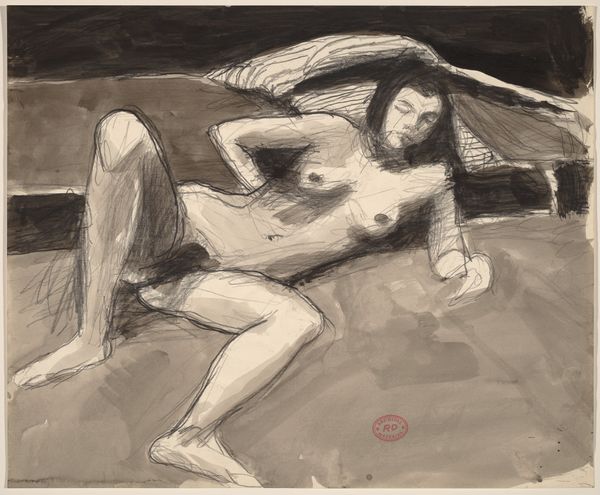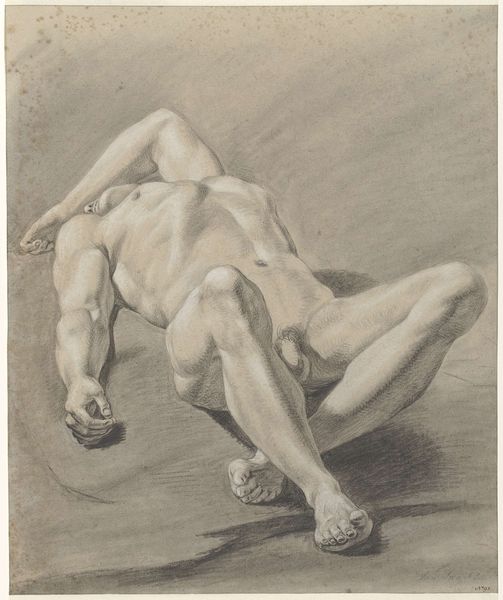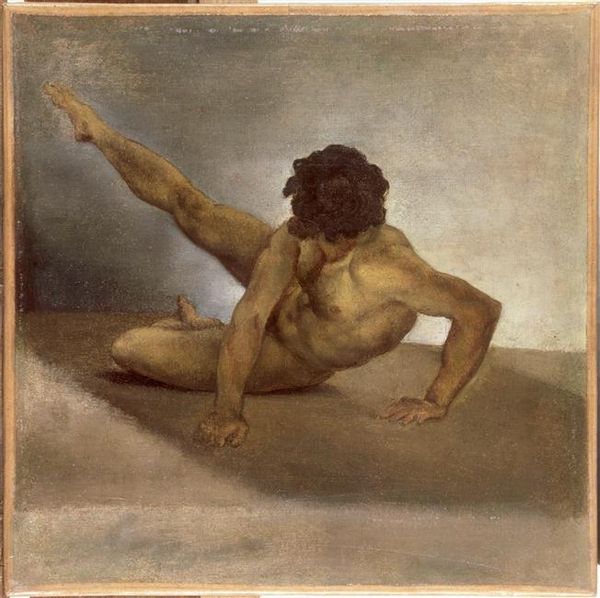
oil-paint
#
portrait
#
oil-paint
#
figuration
#
oil painting
#
expressionism
#
genre-painting
#
nude
#
expressionist
Copyright: Public domain
Curator: My immediate impression is one of raw physical exertion. The bodies, intertwined in this acrobatic pose, radiate a kind of monumental, yet muted energy. Editor: Exactly. Let's unpack Eugène Jansson’s "Atleter" from 1912. The artist employs oil paint to present two nude figures, one hoisting the other in a feat of strength. What’s particularly interesting is how the visible brushstrokes and the restrained palette emphasize the materiality and physical effort involved. Curator: The intertwining of bodies speaks volumes about interdependence, doesn't it? It reminds me of ancient depictions of Hercules. Strength isn't merely individual but relational, requiring trust and cooperation. Are we seeing symbols of a cultural shift, away from the glorification of lone heroes? Editor: Perhaps. Jansson worked at a time when traditional boundaries in art were being challenged. Think about the physical demands on the artist—the labor invested to represent labor—and how that itself becomes a thematic concern within the artwork. Also, note how the backdrop feels unresolved; it doesn't distract but integrates as if labor itself never quite exists within an ideal landscape. Curator: The lack of idealization is key. There's an honest rawness, rejecting classical aesthetics for an expressionist interpretation of the human form. This image is evocative and charged with psychological undertones, reminding us of the human capacity to strive. Editor: And let's consider the very pigments Jansson chose, earth tones. This choice creates a connection between the athletes’ bodies, the earth, and perhaps a grounding to pre-industrial notions of the body in exertion and social labor. It makes me question the societal forces that underpin artistic interpretation. Curator: In that case, it makes one consider the ways images continue to resonate through cultural memory, invoking universal ideals while grappling with contemporary social experiences of work. Editor: Yes, a striking reminder that artistic production itself reflects the forces shaping our understanding of labor and physicality.
Comments
No comments
Be the first to comment and join the conversation on the ultimate creative platform.
